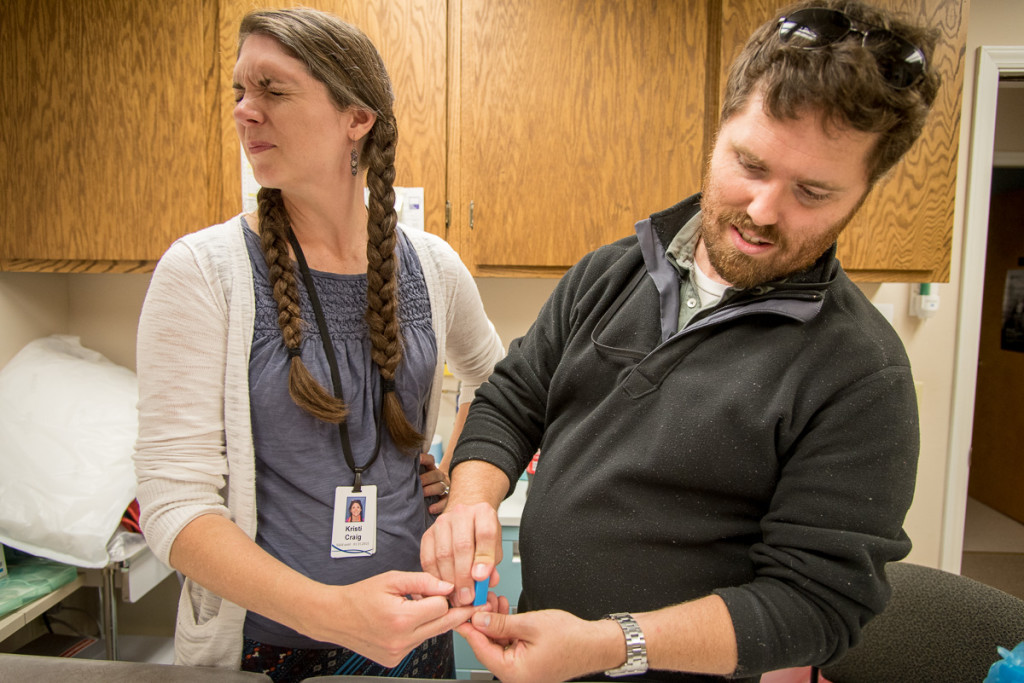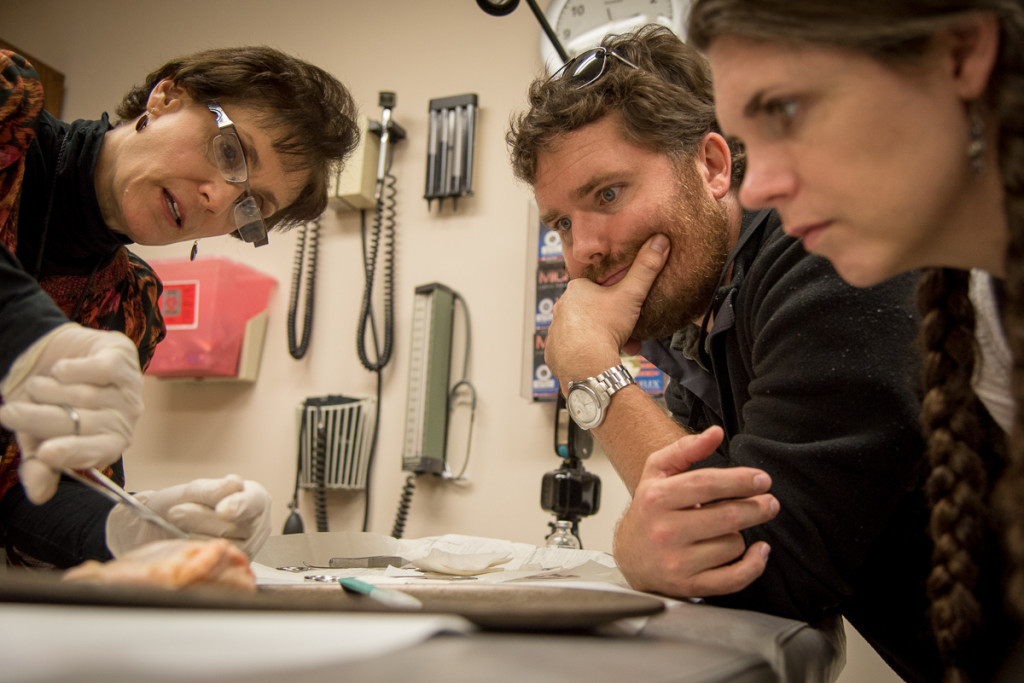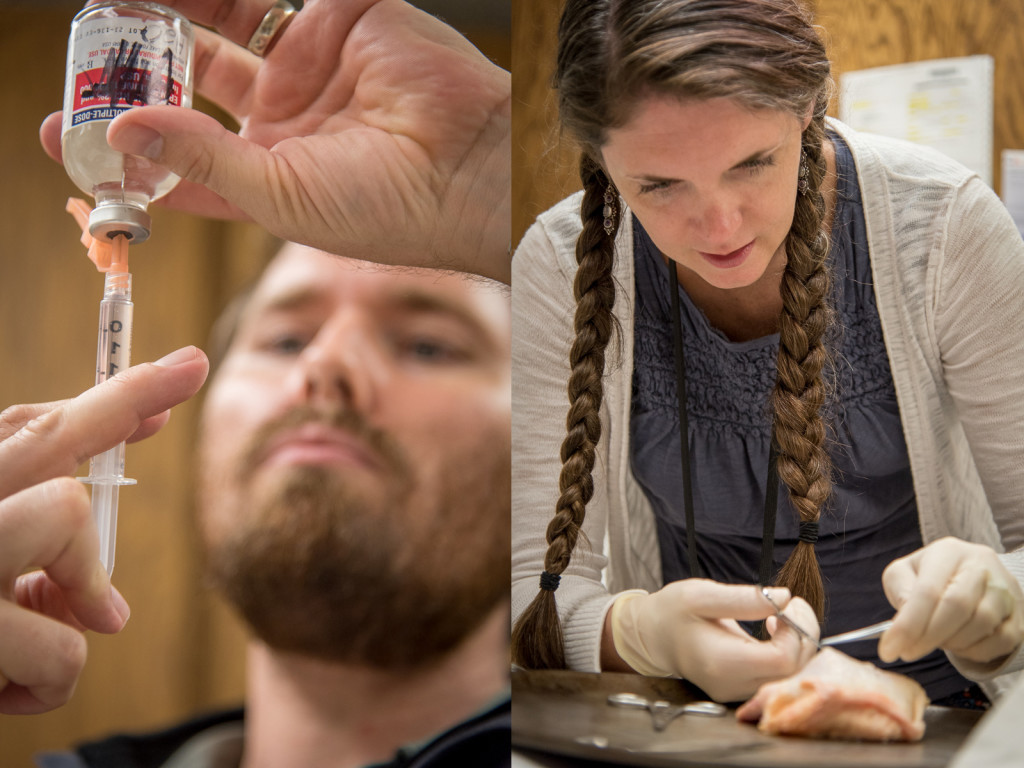A really cool aspect about being here at a real-life, actual Wycliffe office/center (the Jaars headquarters in North Carolina) is that we get access to all kinds of extra resources while we’re here. One of those resources is the clinic here on the center. The medical professionals who work there provide a great deal of medical services to Wycliffe and other missionaries as they make their way through the area. They also provide training to those of us who are going out to the field.
This week, our course offered the chance to learn how to do certain medical-related tasks that might be useful on the field. Specifically, we learned how to do Malaria blood smear slides and how to use sutures to give stitches (on chicken pieces!). There were only a few of us who were interested (basically, me, and a couple who are going to Papua New Guinea), but it was really cool.
[NOTE: for those of you who think this content might make you a bit squeamish, I’ve kept the photos under the jump.]
We started off doing the Malaria blood smear slides. There were three of us, so we were each able to prepare a slide for someone else. It’s a pretty simple procedure–anyone who’s ever tested blood sugar levels will find it very similar.

My classmates prepare a Malaria blood smear slide. The first step is a small prick of the finger, to get a drop or two of blood. I promise it doesn’t hurt–that much.
Step one is to prick a finger, so that we can get a couple drops of blood for the smearing. Above, my classmates, John & Kristi Craig are starting to prepare Kristi’s slide. After that, you simply make a “thin” smear and a “thick” smear on a glass slide. Once it dries, you send it off to whomever it is that “reads” your slide to confirm Malaria. Simple, simple.
The next step we worked on was to practice how to use sutures to close a wound (basically, how to give stitches). Wisely, our instructor didn’t want us to practice this skill on each other, so we used chicken thighs instead. We learned sterile practices, how to anesthetize the wound, how to use the sutures to stitch the wound, and, finally how to remove them.

Our instructor shows us how to properly angle the needle on the suture to ensure it goes through the wound properly. It was fun practicing on dinner.
After we talked about the process, and watched our instructor go through the whole process, we were allowed to practice ourselves. Unfortunately, because I was elbow-deep in chicken and sterile gloves, I didn’t get any photos of my own chicken. I did, however, manage to get a few shots of Kristi and John working through the process.
Being able to give someone or something stitches is one of those Worst Case Scenario skills–it’s good to know how to do it, but you hope you never have to do it. Honestly, though, in our work, in many of the places God calls us to, it may mean the difference between living and dying, or at least living well, as a whole body, and living less-well, as a less-than-whole body.
And I’m grateful to God that I have the opportunity to learn these kinds of skills alongside everything else that He’s teaching us through this training program.

This is great! They didn’t offer this when we went through ICC. Love your photos 🙂
Thank you, Heather…it was WAY too much fun sewing up the chicken–in another realm, I could’ve totally rocked being a medical professional. And, we’re trying hard to make visually interesting photos while we’re here…and not just show the same people sitting in the same classroom every day. Glad you like them!